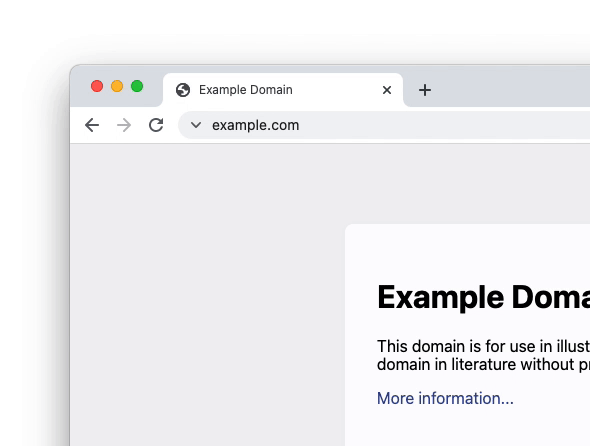As malicious attacks become more widespread, aggressive and advanced, security is becoming more important than ever. While there are hundreds of ways you can increase your site's security, there’s one simple thing everyone should do to get off to a good start – getting an SSL certificate. Server packages such as VPS hosting offer SSL certificates to signify to site users that their data is secure.
So what is an SSL certificate, how does it work, and what are the benefits of being certified?
What is an SSL certificate?
SSL is short for Secure Sockets Layer and, in practical terms, is a certification that verifies a website and provides a secure connection over the internet – most commonly between a user’s browser and the website they’re visiting. By encrypting that connection, SSL prevents the interception of data during transmission, which keeps data protected and adds even more benefits on top. Websites need SSL certificates to prevent criminals from reading and/or modifying data transferred between two systems, which can include sensitive information such as customer payment data.
If you see SSL referred to as TLS, don’t worry – they’re pretty much the same thing. SSL was the name for the original technology developed back in the 1990s, and since then it’s been replaced by the more advanced TLS protocol. However, the term SSL stuck around, so it’s still industry-standard to refer to modern TLS certificates as SSL certificates. We’ll discuss this in more detail later, but for now, we’ll continue to use the commonly accepted term “SSL” throughout this post.
By the way: All of our Web Hosting packages come with SSL certificates as standard.
What does an SSL certificate do?
As you get a better idea of how SSL works, you’ll understand how much your site can benefit from certification. For starters, an SSL certificate can act as visual confirmation to users that your website is a safe and secure environment. This is especially important if you users are asked to input personal information and payment details.
Similarly, making sure you have an SSL certificate helps to build trust with users, who will immediately recognise your site as legitimate and trustworthy. In fact, 87.5% of websites now employ SSL and HTTPS as their first line of defence.
How does an SSL certificate work?
An SSL certificate works by encrypting your information to ensure unauthorised users can’t get their hands on it. Whether you're exchanging data with a website, servers or between two systems, an SSL ensures that only the intended user can read it. This is especially important for protecting sensitive data such as personal info, addresses, card numbers, or financial data when it's being transmitted.
This is how SSL encryption works in a nutshell:
- First, your browser or server tries to connect to a web server that's secured with SSL.
- This triggers a request from your browser or server, asking the web server to prove its identity.
- In response, the web server sends a copy of its SSL certificate back to your browser or server.
- Your browser or server then checks the SSL certificate to see if it's legitimate. If everything checks out, it lets the web server know the site can be trusted.
- Once that's done, the web server sends a digitally signed message back to your browser or server, starting an SSL-encrypted session.
- From this point on, all the data transmitted between your browser or server is encrypted and protected from prying eyes.
This whole process of exchanging info and verifying things is called an "SSL handshake," and even though it may sound complicated, it happens in a matter of milliseconds. You’ll barely notice it!
What does an SSL certificate show?
You can easily spot websites that use SSL certificates. Their URLs start with "HTTPS" instead of just "HTTP" – that "S" at the end stands for security. Also, you'll see a padlock icon in the URL bar, which is a visual sign that the site is secure.
But what does an SSL contain? When you click on the little padlock, the following is displayed:
- The domain name the certificate is issued for.
- The individual, company, or device the certificate is issued to.
- The Certificate Authority (CA) that issued the certificate, along with its digital signature.
- Any subdomains covered by the certificate.
- The dates when the certificate was issued and when it expires.
- The certificate's public key (the private key is kept secret and secure by the recipient).
What's the difference between SSL vs TLS?
Standing for Transport Layer Security, TLS is a protocol that encrypts data transferred between a web server and user, just like SSL. On the surface of it, there's not really a huge difference between them. They both do the same thing, but TLS is the upgraded, more secure version of SSL and you'll only find the differences when you dive into the really technical details of how they work.
Many providers like us now use TLS encryption because of the security benefits, but it's still industry-standard to refer to them as SSL certificates. Read more in our SSH vs SSL guide.
Is SSL the same as TLS?
People often use "SSL" and "TLS" interchangeably, but they're not exactly the same.
SSL is the older version, and TLS is the newer one and what’s used today. Both of them are cryptographic protocols that were created to ensure communications over computer networks are as secure as possible.
SSL was actually developed by Netscape back in the mid-1990s. It went through various versions as they worked to fix any security issues and make the protocol stronger. Then, the Internet Engineering Task Force (IETF) came up with TLS as an upgrade to SSL 3.0. They released TLS 1.0 in 1999, and it's been evolving since then.
TLS has had a bunch of updates over the years, and the latest version is TLS 1.3, which came out in 2018. Each new version has improved security features and gotten rid of outdated encryption methods that were used in SSL. So, even though people still say "SSL" when talking about secure web connections, the technology we use today is TLS.
Types of SSL certificates
There’s actually more than one type of SSL certificate, and each one has a different level of validation. Let’s take a look at the main types of SSL certificates below:
1. Wildcard SSL certificates
A wildcard SSL certificate lets you secure a base domain and unlimited subdomains. This is perfect for websites with lots of subdomains (e.g. support.yourdomain.com, shop.yourdomain.com or blog.yourdomain.com), as buying a separate SSL for each subdomain could get very expensive.
2. Domain Validated (DV) SSL certificates
Domain Validated SSL certificates are the easiest to obtain and offer the least amount of validation and encryption. They’re suitable for informational websites like blogs but not any sites that require users to input sensitive information, such as ecommerce websites. However, the upside is that they’re more affordable and have a simple one-step validation process, in which the website owner must prove domain ownership by responding to an email or phone call.
3. Extended Validation (EV) SSL certificates
At the other end of the scale, we have Extended Validation SSL certificates – the most secure and trustworthy (and most expensive) option. These SSL are authenticated with 18 validation checks and require extensive vetting of your organisation. Ecommerce sites, global banks and financial services, and any other website handling a large volume of sensitive data should opt for this enhanced protection.
4. Organisation Validated (OV) SSL certificates
An in-between option is to choose an Organisation Validated SSL certificate, which is authenticated with nine validation checks. This is the second most expensive type of SSL certificate after EV SSLs, and is commonly used by mid-level business websites and other kinds of public-facing websites that need to encrypt sensitive information.
5. Multi-Domain SSL certificates (MDC)
Multi-Domain SSL certificates can secure multiple domains and sub-domains, including the combination of unique domains and subdomains with different TLDs (top-level domains). However, these SSLs don’t support subdomains by default, so you need to specify the names you want to protect when obtaining your certificate.
6. Unified Communications Certificates (UCC)
Like Multi-Domain SSL certificates, UCCs protect multiple domains and subdomains. They were originally designed specifically for Microsoft Exchange and Office Communications servers (although they can be used more widely now), so they’re a great choice if you use these servers.
What is a self-signed SSL certificate?
|
Self-Signed SSL Certificate |
CA-Signed SSL Certificate |
|---|---|
|
|




